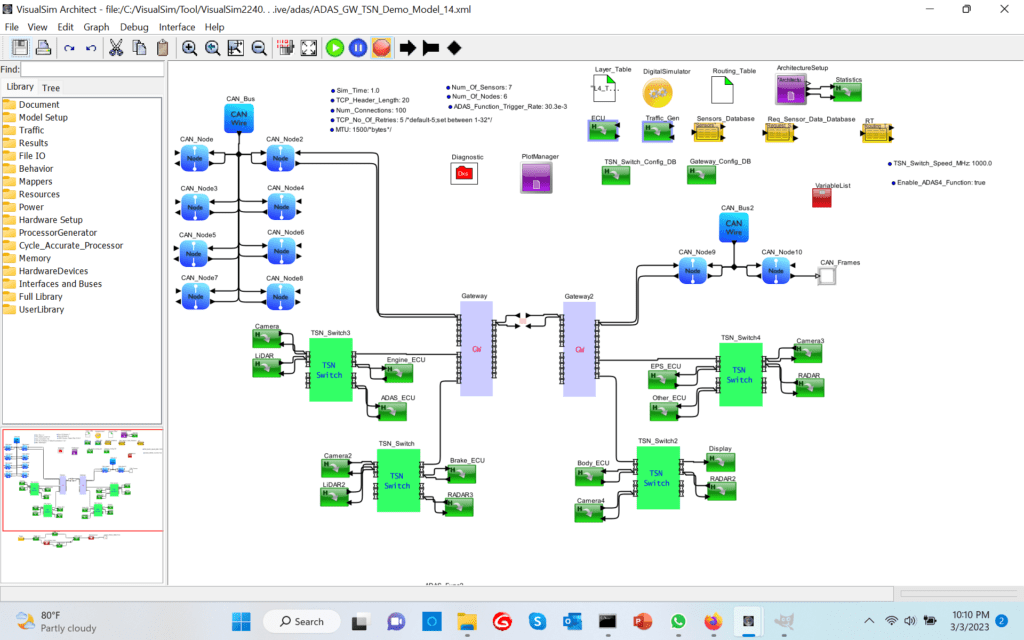Tom Jose and Deepak Shankar are delighted to welcome you to the presentation of our research paper titled “Practical solution to scaling and analyzing a 124 node in-vehicle multi-protocol network” . The paper will be presented at the Automotive Ethernet Conference in Munich, Germany from March 22 at 1700 Hours.
To view this in a video format: https://youtu.be/ikPPBnGV9aU
This paper covers the challenges involved in testing an automotive communication system that contains 100s of nodes and how the proposed solution tackles them.
The traditional approaches include using a physical prototype, a network calculus, or a network analytical model. However, they possess significant drawbacks which make them not suitable for analyzing a 124-node network. Physical prototypes are often made of 2 to 6 nodes and scaling beyond is costly and time-consuming. Network calculus and analytical models cannot capture the dynamism that is seen in the vehicle – including, behavior under failures, concurrent traffics, and congestion over time.
This makes Discrete-Event models the apt replacement for these traditional methodologies. However, Existing Discrete-Event models consume days to complete simulating 100s of TSN nodes and are difficult to debug due to millions of events happening in parallel.
This is why we propose a novel methodology where we abstract the detailed nodes for reducing the number of events while retaining accuracy. This was achieved by creating a discrete event mode of the auto network containing 5 nodes and capturing the performance metrics from the model (Processor latency, cache hit ratios, memory, bus latency, etc.), and were used in the abstract node definition.
We were able to observe drastic differences in the application latency when comparing 5 nodes to that in a 124-node system. This was because of the concurrent traffic and congestion in a 124-node network along with the scheduling algorithm being Strict priority blocked Class A (Priority 5) and allowed access to priorities 6 and 7.
Different use cases – including a DDoS attack on a 124-node network, injection of different faults like Message loss, and incorrect addressing across the network will be presented. These cases were able to get completed within hours while the accuracy was retailed – 92-98%.
More details on the use cases and results will be presented at the conference. Looking forward to meeting you all there.

##TSN #Training #Ethernet #tte #gigabit #modelingandsimulation #VisualSim #Networktopology #automotive #network #elektronik